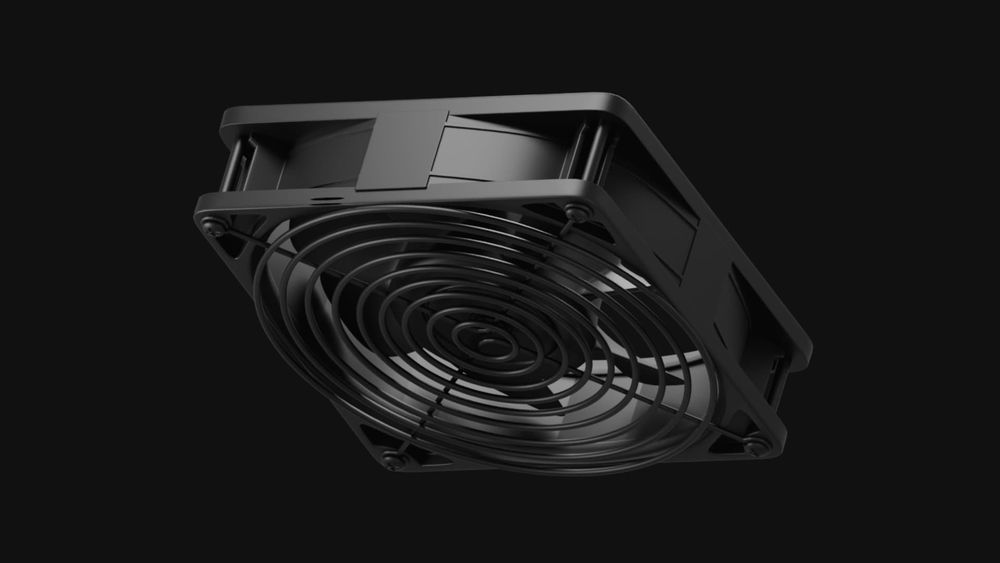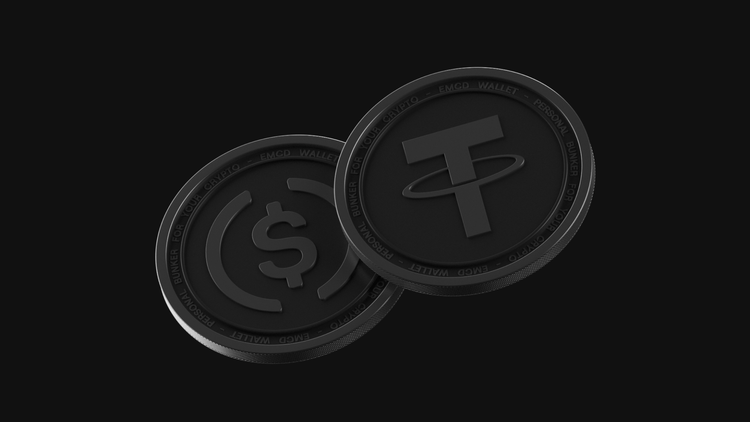Crypto Mining Made Simple: What It Is and How It Works

Crypto mining is one of the most talked-about concepts in the digital world today and also one of the most confusing for newcomers. As cryptocurrency becomes more mainstream, the buzz around the mining process keeps growing. Still, many are unsure how it actually works or why it matters.
This guide is here to clear things up. In this article, you’ll learn everything you need to know about crypto mining, explained in simple, human language — no tech degree required. Let’s start with the basics and find out what mining is.
What’s Cryptocurrency Mining?
If you’re wondering what mining in crypto is, you should know that it’s the process of generating cryptocurrency using specialized hardware, like graphics cards and ASICs. These devices solve complex algorithms, turning them into blocks that are then linked together into chains.

At its core, crypto mining in simple words, is the process of verifying crypto transactions and adding them to a public ledger called the blockchain. Miners earn rewards in the form of coins like Bitcoin or Ethereum in return for solving complex mathematical puzzles.
But this isn’t just about earning digital assets since mining powers the entire crypto ecosystem. It ensures security, decentralization, and transaction integrity. Miners use powerful GPUs and ASICs to crack cryptographic codes, form blocks, and link them in chains. No matter if you’re a tech enthusiast or just crypto-curious, understanding everything about mining is your first step into the engine room of Web3. By understanding what mining is and how it works, you unlock the key process behind cryptocurrency transactions.
How Does Cryptocurrency Mining Work?
Crypto mining is the engine that drives Proof-of-Work blockchains like Bitcoin, transforming electricity and hardware into digital assets. Mining is a high-stakes competition where miners race to validate transactions, secure the network, and earn freshly minted coins. Let’s find out how this system works from the inside.
If you’re eager to learn how mining works, you should know that mining is a cryptographic challenge. Miners use powerful rigs from consumer GPUs to industrial-scale ASIC farms to perform trillions of hash computations per second. These machines are hunting for one thing: the correct cryptographic hash that will unlock the next block. It's like a digital lottery, where each guess brings you closer to the jackpot — the right to append a new block to the blockchain.
Once a valid solution is found, the block is added, and the miner or mining pool gets rewarded. This payout includes a block subsidy — new coins minted into circulation — and transaction fees bundled within the block.
Mining difficulty is constantly adjusted. The Bitcoin network recalculates it every 2016 blocks to keep block creation steady, aiming for one new block approximately every 10 minutes. The more miners join the network, the tougher the puzzles get, and when they leave, the difficulty drops. This self-regulating mechanism helps maintain block production rates despite shifting network power.

Here’s a quick breakdown of what the mining process is and how it works:
- Power on. Your hardware kicks off, running nonstop hash calculations
- Puzzle solving. You try to crack a hash algorithm before others do
- Block found. You discover the right hash and add a block to the chain
- Get paid. Earn new coins and fees. If you're in a mining pool, rewards are shared
- Cash out. Convert your crypto to fiat or stablecoins via exchanges
Keep in mind that mining isn’t just plug-and-play. To make it profitable, you’ll need ultra-low electricity rates, solid cooling, and vigilant monitoring. Get everything dialed in, and you’re effectively printing digital money, creating value from hash power and high uptime.
Now, you know what mining cryptocurrency means. Let’s dive into the crypto mining ways.
Crypto Mining Types: Solo, Pool, and Cloud Mining Explained
In the fast-moving crypto world, mining isn’t a one-size-fits-all game. As the crypto world evolves, so do the ways to mine digital coins. From solo mining in your garage to massive cloud-powered operations, each type has its tools, strategies, and profit potential. Let’s break down the main crypto mining types and see which fits your goals best.
Solo Mining
Solo mining means going alone, using your hardware to solve cryptographic puzzles without relying on a mining pool. You take on the full cost, but also keep 100% of the reward if you successfully mine a block.
Keep in mind that you'll need top-tier hardware to stand a chance: powerful ASIC miners or high-end GPUs, along with stable internet, cooling solutions, and a lot of electricity. With no one else sharing the load, you compete directly with massive mining farms, making it nearly impossible to succeed without industrial-scale power.
When it works, though, the payoff is huge. You keep 100% of the block reward and all transaction fees. It’s worth noting that those wins are rare, and the waiting time between successful blocks can stretch into months or even years. For most miners today, solo mining is more of a hobby or experiment unless you already have serious infrastructure.
To make solo mining work, you’ll need serious firepower and dedication:
- Industrial-grade hardware
- A rock-solid setup with fast internet and an advanced cooling system
- Access to cheap, high-capacity electricity
- Plenty of patience to weather long reward cycles

Pool Mining
To offset solo mining risks, many choose pool mining. This is the most common and beginner-friendly method today.
Instead of mining alone, you join a group of miners who combine their hashing power to increase the chances of mining a block. When the pool earns a reward, it's split among all participants based on each miner's contribution.
This setup allows even those with modest rigs to participate meaningfully. You don’t need the most powerful hardware — just a GPU or ASIC that performs well. In return, you receive smaller, more consistent payouts instead of hoping to win the lottery solo.
It’s a smart way to mine regularly without the extreme solo mining volatility. While pools do charge a small fee, the stability they offer makes it a worthwhile trade-off for most users.

If you’re looking for a smart, secure, and scalable mining platform, you should join EMCD Mining Pool — one of the TOP-10 largest Bitcoin mining pools in the world. Designed for both beginners and professionals, EMCD offers daily payouts, high profitability, and transparent operations.
Cloud Mining
If you want to mine crypto without owning any equipment, cloud mining might sound like the dream solution. Here, you simply rent hashing power from a third-party provider, who runs and maintains all the hardware. You just choose a contract and start earning based on the mining output.
This method is especially attractive to beginners or those who don’t want to deal with hardware maintenance, setup, or electricity costs. However, the simplicity comes with caveats. Profitability depends heavily on contract terms, market conditions, and — most importantly — the provider’s legitimacy.
Comparing Crypto Mining Types
When it comes to cryptocurrency mining, choosing the correct method is key to maximizing your success. To help you navigate these options, we've compiled a detailed comparison of the most popular mining methods. This table will guide you in selecting the best strategy for your crypto mining journey.
| Mining Type | Solo Mining | Pool Mining | Cloud Mining |
| Hardware Needs | High-performance hardware Fast internet Cooling solutions Substantial electricity | Moderate GPU or ASIC | No hardware required — the provider handles the hardware and maintenance |
| Profitability | High potential reward but rare and slow payouts | Steady and consistent payouts based on contribution | Dependent on the contract terms and the provider’s fees |
| Risks | High risk with long wait times for payouts and direct competition with large mining farms | Risk of pool fees reducing overall profitability | Potential risk of scams or unreliable providers |
| Cost & Setup | High initial setup cost for hardware, electricity, and cooling | Pool fees, but no large upfront cost | Low initial cost since you only pay for the rental contract |
| Best For | Experienced miners with significant infrastructure and patience | Miners looking for stable, consistent payouts with moderate investment | Beginners or those who want to mine without dealing with hardware or maintenance |
Solo, Pool or Cloud — Which Path to Crypto Riches?
Solo mining is crypto's high-stakes gamble — you'll need industrial-grade hardware, stomach-churning electricity bills, and lottery-level luck to hit block rewards. Only viable for well-funded operations.
Pool mining remains the smart choice for regular miners. You trade some potential profits for steady payouts, sharing both work and rewards with others while paying modest fees.
Cloud mining? Mostly a trap. The convenient ‘no hardware’ promise hides predatory fees and rampant scams. Unless you enjoy losing money, steer clear.
Is Cryptocurrency Mining Profitable?
Cryptocurrency mining can be profitable, but it’s not a guaranteed goldmine. The truth is, success depends on a mix of strategy, timing, and setup. With the right tools and conditions, mining can become a steady income stream. But ignore key factors, and you might be burning electricity for little to no return.
Here’s what determines mining profitability:
- Hardware efficiency. The better your ASICs or GPUs, the higher your hashing power, and lower your costs per coin
- Electricity costs. Cheap and stable energy is your best friend in this game
- Mining pool choice. Many modern mining pools like EMCD offer steady, daily payouts and boost your profits consistently
- Market prices. The value of mined coins fluctuates, directly affecting your profits
- Network difficulty. As more miners join, mining becomes tougher and less rewarding
So, crypto mining can be profitable, but only if you play smart, optimize your setup, and stay ahead of the trends.

Pros and Cons of Crypto Mining
Cryptocurrency mining can be both rewarding and risky. For some, it’s a profitable venture and a gateway into the world of decentralized finance. For others, it becomes a costly experiment. To help you decide if mining is right for you, here’s a detailed look at its main advantages and drawbacks:
| Advantages | Disadvantages |
| Steady income potential | High electricity consumption and costs |
| Full control over your profits | Expensive hardware requirements |
| Decentralizes and secures networks | Technical setup and maintenance are needed |
| Daily payouts with reliable pools | Market volatility affects profitability |
| Flexible options — mine solo, in a pool, or cloud | Increasing network difficulty over time |
| Daily rewards in pools | Growing mining difficulty |
- GPU mining: $500–$3 000+
- ASIC mining: $1 000–$10 000+ per device
- Additional costs: electricity, cooling, internet, rig frame
Current Trends and Crypto Mining Future
Crypto mining is evolving fast. From the rise of eco-friendly solutions to the large mining pool dominance, the landscape is shifting toward smarter, more sustainable models. Only the most adaptive miners will thrive as regulations tighten and technologies like AI and renewable energy step in.
Mining’s next chapter is all about innovation, sustainability, and global decentralization, and it’s still open to anyone willing to adapt. As blockchain networks evolve, mining will become more accessible through user-friendly platforms, cloud integration, and lightweight protocols. Eco-focused mining using renewable energy and smarter algorithms like PoS and hybrid models will reshape how value is created. Those who stay informed, optimize their setups, and embrace change will help define the next chapter of crypto mining.
FAQ
Is cryptocurrency mining legal?
Yes, cryptocurrency mining is legal in most countries, but it depends on local laws. Some countries, like China, have banned it, while others, like the USA, Canada, and Kazakhstan, allow it but may regulate energy use and taxation. Always check your local regulations.
How much does it cost to start mining?
Mining costs depend on your budget, goals, and setup type:
What are the most profitable cryptocurrencies to mine?
Today, the most profitable digital coins to mine are Bitcoin (BTC), Kaspa (KAS), Ethereum Classic (ETC), Monero (XMR), and Iron Fish (IRON). Profitability depends on your hardware, electricity cost, and market trends. Always check real-time mining calculators before diving in.
Can I mine cryptocurrency on my phone or laptop?
Yes, you can mine on a phone or laptop, but it’s extremely slow, barely profitable, and can overheat or damage your device. It’s better to use them to manage your mining rigs or earn small rewards with mobile-friendly projects.
How much electricity does mining consume?
Mining can be power-hungry. For example, a single ASIC miner like the Antminer S19 uses around 3,000W, costing $80–$150/month depending on local rates. So, you need to factor in electricity cost since it can make or break your profits.
Is mining harmful to my hardware?
Yes, but only if you mine improperly. This process puts constant stress on GPUs or ASICs, which can lead to overheating, faster wear, or component failure. But with good cooling, proper overclocking, and regular maintenance, your hardware can last for years.
What is the difference between Proof of Work and Proof of Stake?
Proof of Work (PoW) requires miners to solve complex mathematical puzzles to validate transactions and secure the network, consuming significant energy.
Proof of Stake (PoS), on the other hand, relies on validators who lock up their coins as collateral. The network randomly selects validators to create new blocks, making it energy-efficient.
Do I need technical knowledge to start mining?
While technical knowledge helps, it’s not a must to start mining. You can use mining software with user-friendly interfaces like Kryptex or NiceHash, which guide you through the setup. However, understanding hardware requirements, software configurations, and basic troubleshooting will improve your experience and profits.
How long does it take to mine one Bitcoin?
Mining one Bitcoin depends on several factors, including hashrate, mining hardware, and the network difficulty. Individual miners rarely mine full blocks solo and typically join mining pools to share rewards.




